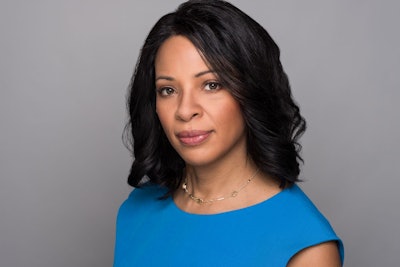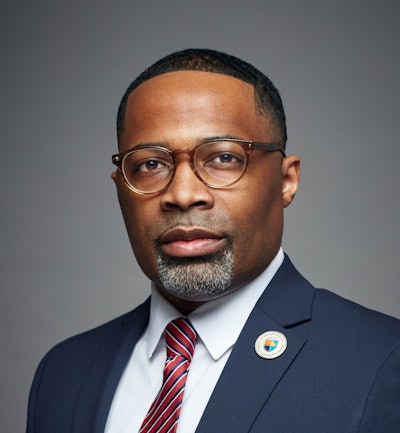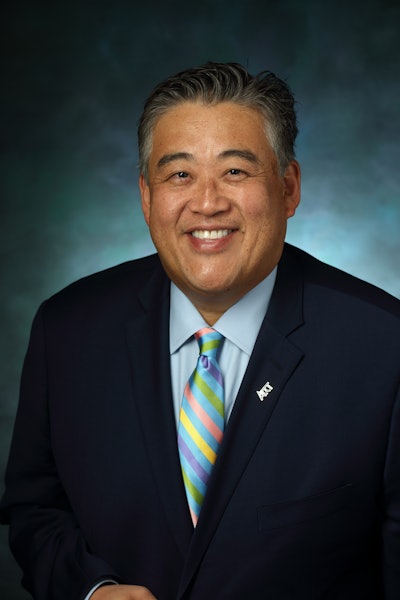At the onset of the COVID-19 pandemic, community colleges across the country saw a decline in enrollment for myriad reasons — financial, family, illness, lack of internet or inability to adapt to online learning. As in-person and hybrid learning resume, enrollment numbers have not returned to pre-COVID levels.
Economic issues still impact many community college students, a large number of whom are adult learners or have extensive family obligations. Students navigate housing and food insecurity, transportation issues, and other limitations to access.
Individuals committed to community colleges and the vital role they play in American higher education continue to advocate for the students and the institutions that serve them.
 Dr. Monica Parrish Trent
Dr. Monica Parrish Trent
Critical needs
“We are experiencing significant enrollment losses, especially in some states, like California, and we are working to try to get students back into our institutions, but we’re also seeing some significant demographic shifts,” said Jee Hang Lee, president and CEO of the Association of Community College Trustees. “We have experienced significant loss of older students, who have typically been our traditional community college students.”
Dr. Everrett A. Smith, an associate professor of higher education at University of Cincinnati, said basic needs such as food, housing, and mental health care are critical challenges that community colleges are trying to recognize and address.
Trent said the overall drop in enrollment was around 13%, but certain populations had greater drops than others. Male students, Black and Indigenous students, and adult learners had higher percentages and require greater support.
“When we think about the ultimate outcome of a college experience or a certificate, degree, or credential, it’s employability; so aligning our programs and pathways with job opportunities that have living, sustaining wages is an important issue,” said Trent. “Also, ensuring that there’s equity in the experiences of our students. Making sure that all students have what they need and that we’re being mindful of any gaps in terms of completion, persistence, programming and social and economic mobility.”
Transportation is a significant issue, and Trent suggested increasing transportation vouchers. She also noted that the college should reach out to students regarding their needs rather than waiting for students to come to them.
Trent mentioned some common issues: “Assistance with childcare for our student parents, creating opportunities to mitigate housing and food insecurities, such as food pantries on campus,” Trent said. “If students are not mentally and psychologically safe and if they’re not cared for in terms of their needs, it’s very difficult to learn.”
Funding
 Dr. Larry Johnson
Dr. Larry Johnson
“In states like Tennessee where it’s performance-based funding, even if a community college does really well in comparison to its previous year, there are still benchmarks to some extent across the state with other community colleges that can have an adverse impact on funding,” said Smith, whose research currently focuses on community colleges. “Looking for and securing alternative resources, like philanthropic gifts and private giving, will continue to be a strategy that two-year institutions will have to look into to make sure they’re sustainable and able to carry out their open access mission.”
Achieving the Dream works with corporations, foundations, and other partners to support community colleges. This involves foundations with equity missions similar to those of the colleges.
Lee said there is concern of funds from Health Resources and Services Administration (HRSA), CARES Act, and other federal stimulus funds ending. “While state budgets are currently doing really well, we do have some concern maybe a year or two down the road,” he said.
There is the possibility of increasing enrollment with high-demand programs like nursing and other areas of healthcare, said Lee, but such programs are costly in order to ensure adequate skills labs and faculty. Lee said funding needs to be cultivated from hospital systems desirous of building their nursing workforce.
“We’re having discussions with policy makers across the spectrum from state and federal [government] … about the fact that we need to be supporting our students through this journey,” Lee said. “This can involve modernizing the Pell Grant program to allow for short-term program access and modernizing the work study program to allow for apprenticeship programs.”
Innovations
Smith said a rebound in community college enrollment is largely due to dual enrollment, which allows high school students to take community college courses. But Trent said these students are often not low-income students and therefore accommodation should be made for students who don’t have the resources to pay.
Guttman Community College was founded in 2011 and opened in 2012 to serve 17- and 18-year-old students and increase graduation and transfer rates among students coming directly from New York City public high schools. Johnson said the college’s current innovative path increases focus on equity and social justice, which includes also serving people ages 16 to 24 who are not in school or at work.
“Through the development of our strategic enrollment management plan, we have a very clear focus on the retention and the completion of students — and to ensure they have multiple pathways,” said Johnson. “That includes a pathway we have done well with: students transitioning to a four-year college or university, or a pathway where that student can transition directly to work. We’re planning to implement that plan in fall 2023.
 Jee Hang Lee
Jee Hang Lee
Guttman has both 12-week and six-week terms, which boost completion rates. Johnson and his team created a Career Innovation Hub that will include additional certificate programs.
Creating partnerships with local industry is a crucial part of building pathways to gainful employment, Trent noted. “If the community can see the connection between the community college and social and economic mobility, that’s a good response to declining enrollment,” she said. “Community colleges continuing to invest in a professional learning opportunity for their faculty and staff so that they’re better able to respond to the needs of today’s learners…will go a long way toward students enrolling in college and being able to stay in college in order to get their credentials and move into a job.”
Urban institutions are able to build connections with industry given their access to businesses, said Smith, pointing to careers in coding and programming as examples. “They have the opportunity to fill the gaps between the innovation economy and the needs of the city,” he said.
Over the past decade, community colleges across the country have increased efforts to work with state higher education systems to improve transferability as well as to offer bachelor’s degrees in nursing, healthcare, and other occupations with workforce relevance.
Given the modifications to education during the pandemic, students have come to appreciate hybrid and asynchronistic options. “Students are also choosing to pursue short-term programs that are a little more attuned to the workforce,” said Lee. “That’s something colleges are finetuning right now, especially if we’re successful in getting passage of the Jobs Act, which would allow Pell Grant access to these shorter-term programs.”
For students who are career-focused rather than transfer-focused, Lee said targeted advising will empower them to choose their career goals and set them on their path at a quicker pace. Expanded access to applied baccalaureate programs — four-year degrees at community colleges — will be beneficial to these students.
“Colleges need to be reflective of the student demand,” Lee said. “For governing boards, as leaders in the community, they’re bringing stakeholders, community leaders, and businesses to the table to have these substantive conversations. They are thinking about the workforce needs of the communities.”





















